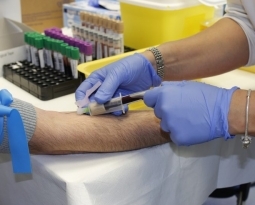Idaho Patent of the Month – April 2021
Target accuracy can be improved when using precisely-made components – from ammunition to target acquisition devices. However, as range is extended and you begin working in long-range settings, this accuracy is affected by other factors including “bullet drop”. Bullet drop refers to the influence of gravity on the moving bullet, as it flies in a path curved downwards. Long range shooting therefore requires aiming slightly above your target, adjusting for the bullet drop. Wind,projectile spin, and other factors can impact your accuracy as well. Traditional telescopic target acquisition devices lack in effectiveness when you surpass the 400 yard range. HVRT Corp. (Horus Vision) has developed an improved target acquisition device for all ranges.
Traditional telescopic target acquisition devices have cross-hairs centered in the field, where the vertical is used to adjust for wind and horizontal for bullet drop. Some included reticles (lines which offer a measuring scale) but lacked accuracy as they were based on either an average man’s height or average size of a target. These resulted in imprecise reticles with great variation. Horus Vision has designed their acquisition device with reticles that help to select secondary aiming points. The telescopic lens is used in combination with an electronic device which helps to better view the image of the target. This screen is affixed to the target acquisition device for easy viewing. The images are taken in different spectral limits – infrared, thermal, UV and so on. The images are processed by a ballistics calculator which returns information on adjustments needed to successfully hit the target. The selected reticle is then superimposed over the target so the shooter can take effective aim. The system provides enhanced accuracy and, thanks to the ballistics calculator, is effective at any range.
Are you developing new software for an existing application? Did you know your development work could be eligible for the R&D Tax Credit and you can receive up to 14% back on your expenses? Even if your development isn’t successful your work may still qualify for R&D credits (i.e. you don’t need to have a patent to qualify). To find out more, please contact a Swanson Reed R&D Specialist today or check out our free online eligibility test.
Who We Are:
Swanson Reed is one of the U.S.’ largest Specialist R&D tax advisory firms. We manage all facets of the R&D tax credit program, from claim preparation and audit compliance to claim disputes.
Swanson Reed regularly hosts free webinars and provides free IRS CE and CPE credits for CPAs. For more information please visit us at www.swansonreed.com/webinars or contact your usual Swanson Reed representative.

















